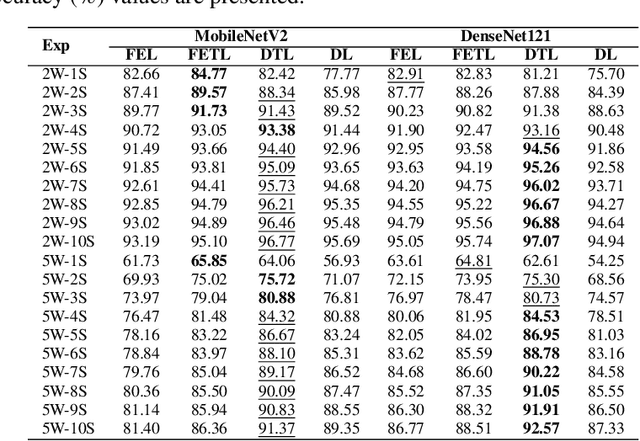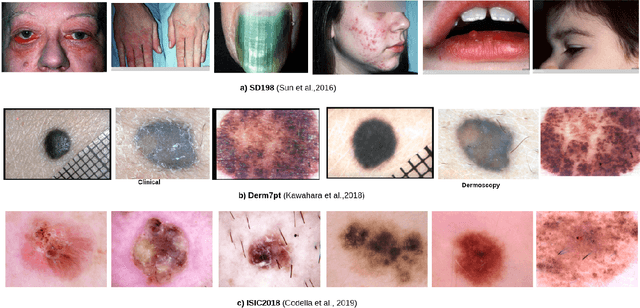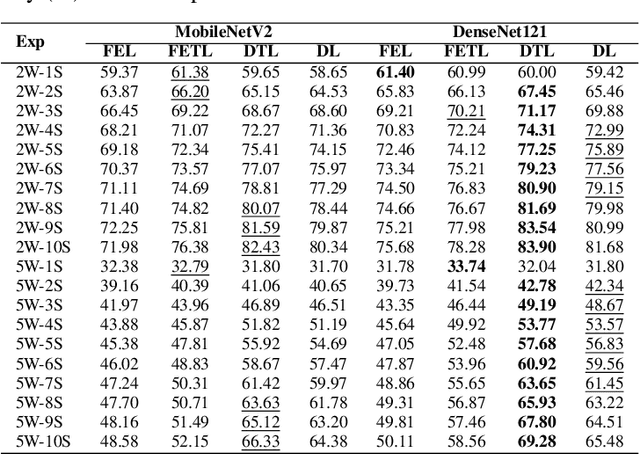Zeynep Özdemir
Meta-Transfer Derm-Diagnosis: Exploring Few-Shot Learning and Transfer Learning for Skin Disease Classification in Long-Tail Distribution
Apr 25, 2024



Abstract:Addressing the challenges of rare diseases is difficult, especially with the limited number of reference images and a small patient population. This is more evident in rare skin diseases, where we encounter long-tailed data distributions that make it difficult to develop unbiased and broadly effective models. The diverse ways in which image datasets are gathered and their distinct purposes also add to these challenges. Our study conducts a detailed examination of the benefits and drawbacks of episodic and conventional training methodologies, adopting a few-shot learning approach alongside transfer learning. We evaluated our models using the ISIC2018, Derm7pt, and SD-198 datasets. With minimal labeled examples, our models showed substantial information gains and better performance compared to previously trained models. Our research emphasizes the improved ability to represent features in DenseNet121 and MobileNetV2 models, achieved by using pre-trained models on ImageNet to increase similarities within classes. Moreover, our experiments, ranging from 2-way to 5-way classifications with up to 10 examples, showed a growing success rate for traditional transfer learning methods as the number of examples increased. The addition of data augmentation techniques significantly improved our transfer learning based model performance, leading to higher performances than existing methods, especially in the SD-198 and ISIC2018 datasets. All source code related to this work will be made publicly available soon at the provided URL.
Design of Internet of Things Based Controller for Direct Current Motors
Oct 21, 2019Abstract:It is known that internet have been widespread in many areas of life and enabled machines to communicate each other. The terms of Internet of Things (IoT) has emerged as a result of networks consist of machines and equipment that work independent of operator and communicate each other. Sensors, embedded systems, communication technologies and data storage systems like clouds create wide area networks that can communicate and share data. In this study, the application of the IoT on a low speed mechanical benchmark driven by a direct current motor has been designed. It is aimed to keep the motor speed fixed at desired value according to the changings occurs depending on varying the pressure acting on the actuators. In presented study, a speed control is performed by establishing a modeling and simulation mechanism that will give the closest results to the real system.
 Add to Chrome
Add to Chrome Add to Firefox
Add to Firefox Add to Edge
Add to Edge